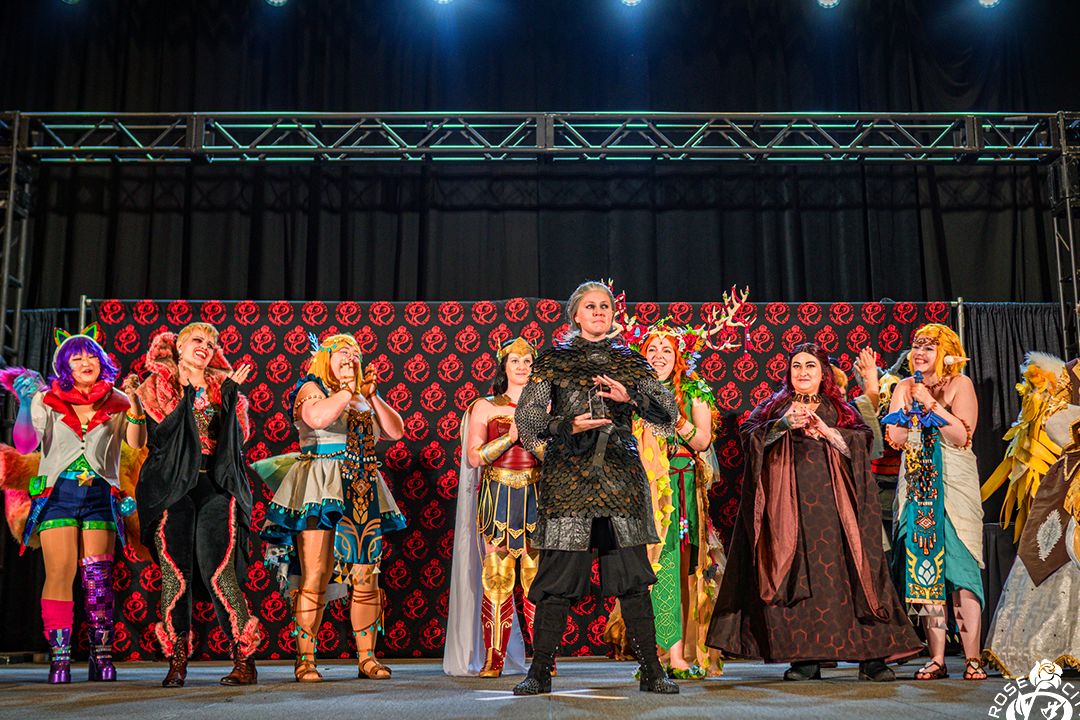Review: The Little Prince

Annabel Cantor charms as the iconic interstellar wanderer in The Little Prince.
The popular 1942 illustrated French book The Little Prince must be familiar to many Portlanders—heck, it must have inspired a dozen local tattoos. But though much beloved, it’s not a narrative that seeks to satisfy. Instead, it’s the kind of tale that strikes a tuning fork in the hollows of the heart, letting its echoes explore the empty space. Ah, l’ennui. The most prized French export beside champagne.
Philosophy
From the Little Prince, we learn:
The king’s perspective is pointless; he deludes himself about his dominion. The businessman’s perspective is pointless; he numbers among his assets things that he can neither use, nor caretake. The workman has become an unquestioning slave to ever-hastening external demands, and can never rest.
The main item of good news is that these are all “grown up” problems, and becoming a grownup, the text asserts, is preventable. One needs to carefully maintain a child’s mind, to see beyond the BS. “What is essential,” we’re told, “is invisible to the eye.”
To oversimplify this content for children’s theater, is probably a big temptation—but would also ultimately be a shame. Thank goodness Shaking The Tree has made the effort to get it right.
Cast
As the Little Prince, Annabel Cantor strikes several nice balances. Her stage presence is completely gender-neutral, and her body language easily slips between playful and proud, as befits a little prince. Her excellent delivery of the material itself, and her undeniable cuteness in a curly wig, prove she’s primed for her next role as Annie at Northwest Children’s Theater. Unable to be fazed, she even corrected a dialogue slip-up by costar Erich England on Sunday, without missing a beat.
As the Aviator, England serves as narrator, and worldly straight-man to the Little Prince’s otherworldly mystique. But you don’t get the sense (as you might from the script alone) that he’s fighting very hard to be a rational adult, “concerned with matters of importance.” While trying to decide whether the word “amateur” would ring too harsh for England, I scoped his bio. Looks like this is his second production, and his main avocation is rock climbing—so, “amateur” is apt. He coasts through the role in a dreamlike languor, but he’s a believable dreamer, and brings warmth and sensitivity to the role.
Phillip Cuomo, in contrast, is a veteran, (Artists Rep, Third Rail Rep, Imago and more) and the production heaps demands upon him accordingly. Cuomo plays all the characters the prince meets on his interstellar journey, and then resurfaces as the fox the prince tames on earth. While the former four roles seem like they could be making a philosophical point (“all grownups are the same”), seeing him emerge yet again as a fox strains the suspension of even a small child’s disbelief. Fortunately, he effects each role with a different voice and with a slightly clownish, child-favoring flair, giving little ones something to enjoy, whether or not they’re catching the philosophical point.
Megan Sky Hale (Imago/Theater Vertigo alum) plays two roles, rose and snake, with grace, but she brings the most convincing carriage to the latter. She wears menacing and hypnotic, better than coquettish. (And from this reviewer, that is a compliment.)
Tech
This play comes with major staging challenges, most notably: how do you show space travel? The single stationary set with varied lighting actually does a pretty admirable job of showing both a planetary, and a terrestrial desert landscape. And costumes which ingeniously come with their own “planets” attached, help sell the story.
Costumer Rachelle Waldie (of AEQUANIMITAS) wisely chose to bring Exupery’s illustrations to life, outfitting the Little Prince in bright colors and crisp dandy details like brass buttons, broad collars, and fitted darts. Fans of the drawings will be delighted by the faithful reproduction. Other characters are dressed suitably for their various roles; some looks are cartoonish, and others workaday. An additional bugaboo, talking flowers and plants, has been deftly dispatched with unique designs, such as the snake costume, which frees the actress’s arms to serve as graceful, slithering snake-puppets, even as her whole body is also attired as a hooded cobra.
Shaking The Tree doesn’t mind trusting tikes with big tasks, as evidenced by the production’s lighting tech, eleven-year-old Jasper Jenkins. As far as Culturephile could tell, he was riding the sliders for the whole show, and he delivered the best kind of lighting performance: the kind you can take for granted.
In a couple spots, Culturephile wished for more. A pair of ears, or a snout, or both, would’ve been a welcome addition to the fox character, to disguise a face we’d seen already. Some sort of lines on the page of the aviator’s sketchpad, would have sold the illusion better than total blanks. And while quieter sound is generally preferred for an all-ages crowd, a tad more volume for ostensibly noisy elements (like the airplane) and some sort of whooshing sound effect for the Prince’s simulated space flight, would have sounded more convincing.
Lasting Impressions
This story wins the day because it makes the heaviest and most complex emotions feel playful and accessible. It says profound and humbling things about the nature of intimacy (“If you tame me, we shall need each other” [said the fox] “To me, you will be unique in all the world…. First you must sit down at a little distance from me…but you will sit a little closer to me every day.”) It echoes ancient beliefs about death and afterlife (“I cannot carry this body with me…it will be like an old abandoned shell…there’s nothing sad about old shells.”) And, in a surprise twist that jerks the most parental tears, it offers a stunning insight: the little prince has tamed the big aviator, and not the other way ’round.
For a more comprehensive list of upcoming events, visit the Arts & Entertainment Calendar anytime!




